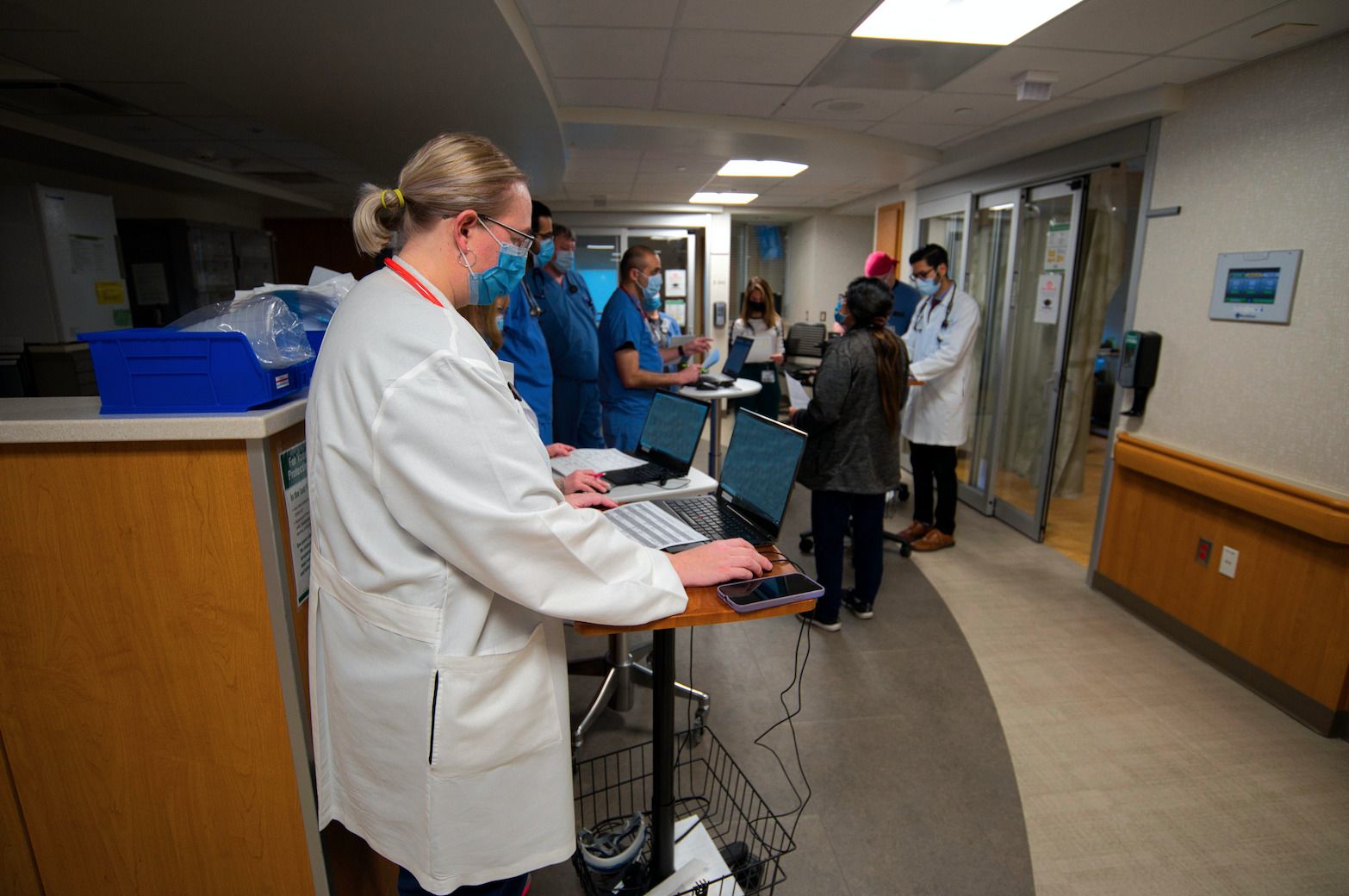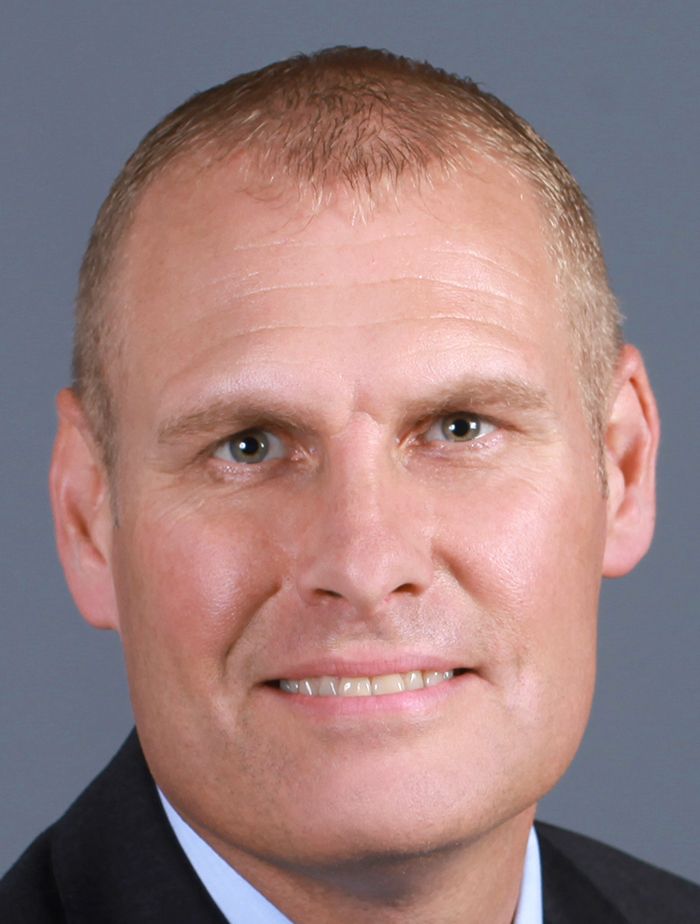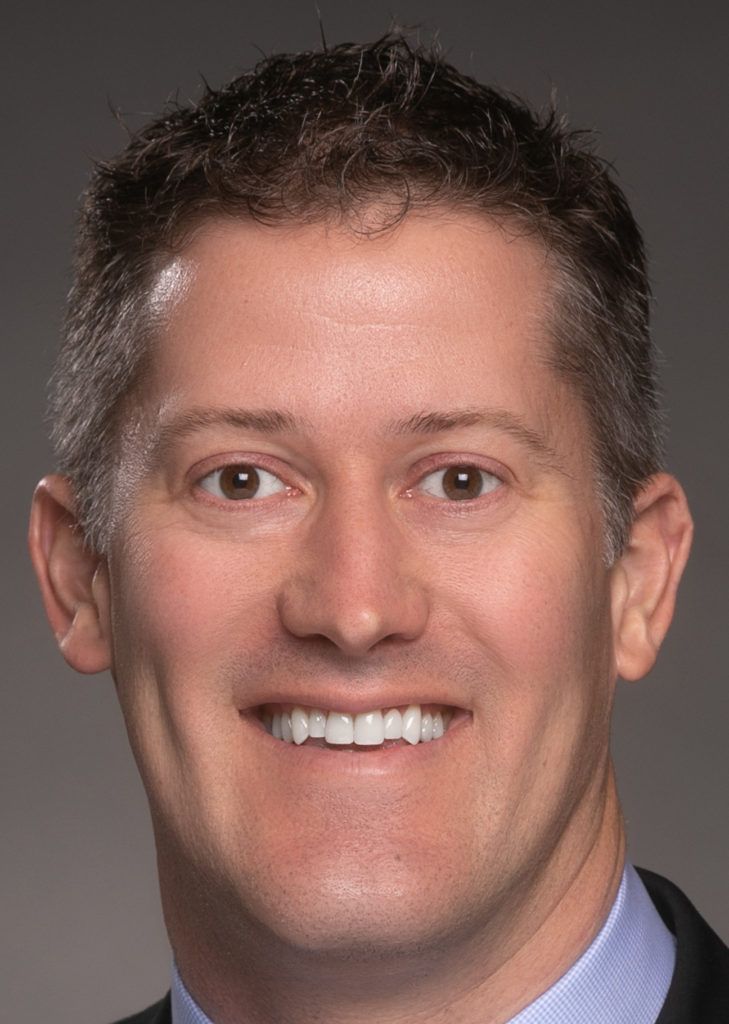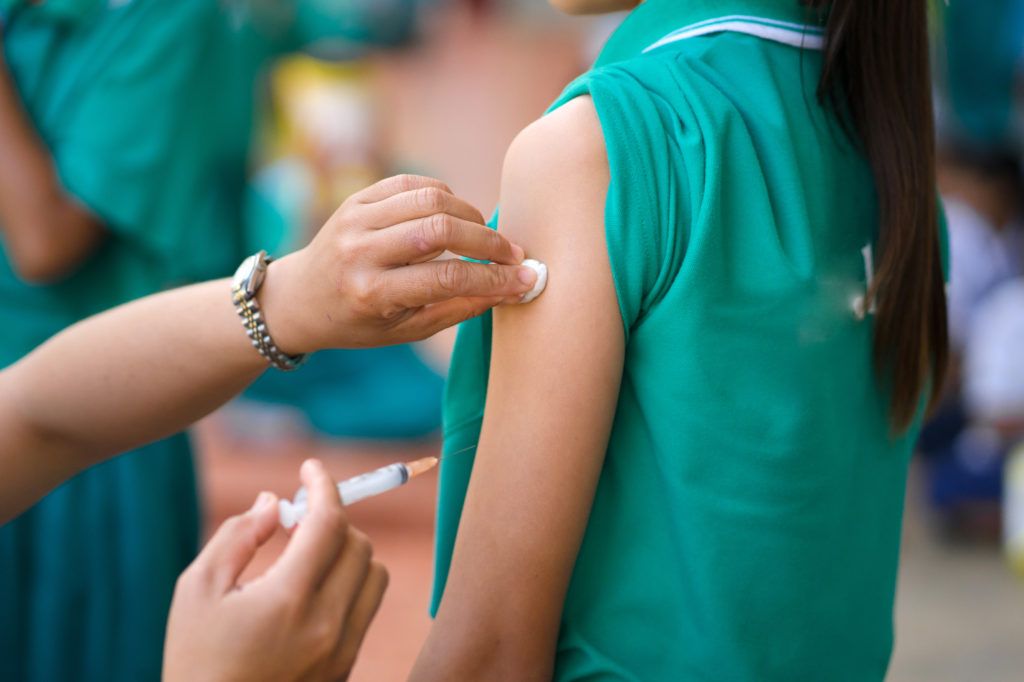The emergence of the latest COVID-19 variant, which makes up nearly 80% of new cases nationally, is raising additional health concerns due to its ability to infect people even if they are vaccinated or have had a prior infection, and health officials are increasingly recommending precautions such as masking indoors and staying up to date on booster shots.
But those concerns are not likely to sway South Dakota government, health care and school officials to move away from an official stance of “living with the virus” rather than pursuing active interventions this fall.
The BA.5 variant, first detected in the United States at the end of April, is a subvariant of Omicron with molecular spike mutations that make it more contagious than previous variants. This means high case counts are likely, but that might not necessarily mean a drastic spike in hospitalizations and deaths because vaccines and other forms of immunity, while not impenetrable, can still blunt the impact of infection.
“The good news is that the virus is evolving the way that we expect viruses to evolve,” said Dr. Jeremy Cauwels, chief physician at Sanford Health in Sioux Falls. “They get better at spreading and they get worse at killing their host.”
As of July 27, the South Dakota Department of Health reported 4,390 active cases, up from 4,176 the previous week. State data shows 56 of 66 counties as having high community spread, defined as 100 cases or greater per 100,000 or a 10% or greater PCR test positivity rate. The overall state positivity rate over the 7-day period leading up to July 27 was 23.9%.
State Epidemiologist Josh Clayton told News Watch, in response to written questions, that the state will continue its policy of weekly rather than daily COVID data updates, a practice that began in March. He added that the DOH monitors hospitalization rates to determine the level of threat from the virus. There are 82 people currently hospitalized with COVID-19, according to DOH data, down slightly from 86 the week of July 20. The state reported nine new deaths of people with COVID-19 during the week leading up to July 27, bringing the total during the pandemic to 2,956.
“The number of people currently hospitalized is still far below the peak of 423 during the Omicron variant wave in early 2022 and the 607 during the initial wave in November 2020,” said Clayton.
But he made it clear he is not dismissing the potential threat of BA.5, which infected President Joe Biden recently and features symptoms similar to previous variants, including congestion, headaches, cough, fever and fatigue. The CDC has also studied and cited the potential for some individuals to suffer from “long COVID,” post-infection conditions that can include “a wide range of ongoing health problems that last weeks, months, or years.”
“Each new variant means the virus has an opportunity to further evade the community-wide immunity that has developed (through vaccination or previous infection),” according to Clayton. “The BA.5 subvariant appears to better evade the human immune response, which will likely result in more COVID-19 infections. This is because people will have a harder time fighting off the virus, even though they have been infected or vaccinated. The BA.5 variant may also result in more people becoming hospitalized or dying if they become infected with COVID-19.”
Kevin Post, chief medical officer for Avera Health, said the hospital system constantly monitors its ability to serve the community during the ebbs and flows of a pandemic, which means having enough medical personnel in position to help those in need.
“Access to healthcare is a key measurement,” said Post. “Some of that will be hospitalization rates of COVID itself, but a complicating factor is the workforce shortage in health care, like we’re seeing everywhere else, and how that affects access to hospital beds. It all comes back to capacity.”

Vaccines still seen as important
South Dakota’s rate of fully vaccinated residents is 63.2%, below the national average of 67.7%. Among those fully vaccinated, only 43.3% have received a booster shot, which ranks 39th among all states, according to CDC data. That puts the state behind CDC recommendations that anyone 50 and older (12 and older for those immunocompromised) should get a “second booster dose at least 4 months after their first.”
Post said that when someone gets vaccinated or has an active infection, there are three to four months when that individual has “active circulating antibodies” that work quickly to respond to exposure (with some memory immunity as well). As the antibodies wane, he said, boosters become crucial to provide protection against severe illness – a message that doesn’t always cut through political posturing on the topic of vaccines.

“I do think there’s a responsibility for health systems to continue to be the voice of what is up to date on unbiased research to provide trusted medical information to patients,” said Post, who has worked as a family and emergency physician. “We live in a world, and not just South Dakota, where there is so much information and misinformation, I do think it’s up to health organizations to be that trusted resource when it’s difficult at times to know who you can trust.”
Clayton, the state epidemiologist, told News Watch that he agrees with the CDC guidance regarding getting vaccinated and boosted. There are also CDC-approved therapeutics such as the oral antiviral Paxlovid that can be used when prescribed once someone is known to be infected.
“Data available for both South Dakota and nationally have shown that staying up to date with your COVID-19 vaccination reduces the risk of infection, emergency department visits, hospitalization, and death for persons of all ages, including young children,” Clayton said.
That message was echoed by Cauwels, who doesn’t dismiss prior infection as a factor but points to unpredictability based on when the infection occurred, how robust the immune response and what variant triggered the illness.
“Our public message remains the same, and that is that a vaccinated person has a lower risk of ending up in the hospital than the same person next to them who is unvaccinated,” said Cauwels. “In individual wellness, if I was just talking to you, or from a population wellness standpoint, if I was talking to all of South Dakota, in both cases I can say that the right answer is to be vaccinated.”
In response to a question from News Watch, a representative of the office of Gov. Kristi Noem wrote: “Governor Noem supports the recommendations of her Department of Health. Talk to your doctor about if COVID vaccinations and boosters are the right course of action for you and your family.”

“Our public message remains the same, and that is that a vaccinated person has a lower risk of ending up in the hospital than the same person next to them who is unvaccinated." -- Dr. Jeremy Cauwels, Sanford Health
Changing public strategies
Nearly two-and-a-half years into the COVID-19 pandemic, Cauwels knows that trying to dictate people’s day-to-day behavior is difficult anywhere, and certainly in conservative states such as South Dakota. Private or public mitigation measures used in the early stages, with no vaccine available, and the increased urgency due to hospitalizations during the onslaught of the Delta wave in 2021, aren’t necessarily best practices for the fall of 2022, he said.
“Our goal was always to provide excellent care to anybody who came through the doors,” Cauwels noted. “There was a period of time where it was difficult because of the hundreds of people who were hospitalized with COVID all at once. Thankfully now that number is consistently below 50 people in our system, and that’s a number we can deal with and treat comfortably on a regular basis.”
If the number of hospitalized people remains manageable, Noem’s early reliance on the concept of “personal responsibility” could become the norm, with the caveat that responsibility as defined by the medical and scientific community involves keeping up to date with vaccinations.
“The messaging used to be that the safest thing you can do is limit your contact with anybody you might possibly run into,” said Cauwels. “The messaging now is that there are certain people that should still limit their contact because they have chronic illnesses that make them otherwise unhealthy or very easy to make horribly sick. But for most of us, we have an immune system, we have a vaccine, and we have medications available that we can take by pill to limit the severity of the illness. Those are really the jumping-off points that we need to start treating this like a part of day-to-day life and not a global pandemic.”
That quest for normalcy extends to the state’s largest school district, with Sioux Falls approving a Continue to Learn Plan for 2022-23 that eliminates the district’s Virtual Academy option for families uncomfortable with in-person classes during the height of the pandemic. Face coverings, which were “encouraged” last year for all students in pre-K through fifth grade and for unvaccinated students and staff in sixth through 12th grades, are now simply “available upon request,” though the policy can change if circumstances warrant.
The district shares information about the benefits of COVID-19 vaccines but does not mandate them for students or staff, calling it “a personal choice you should discuss with your healthcare provider.” Students who test positive must stay out of school “for five days from symptom onset, or if asymptomatic, five days from the test date.” There is no in-school contact tracing that keeps close contacts out of class. Sports and fine arts activities will begin the school year in Tier 4, which means they operate as normal.
“As always,” said district spokesperson Carly Uthe, “if our community experiences changing Covid conditions, the plan will be revised in consultation with local medical partners and any changes would come before the school board for approval.”

Finding the right path forward
Jim Buchanan, a retired doctor in Rapid City who built a loyal Twitter following during the pandemic with data updates and analysis, still wears a KN-95 mask in public and avoids indoor dining in most cases. But the intensity of his unease about others not taking the same precautions has lessened in recent months, giving way to a sense of resignation about the lack of urgency surrounding the virus in South Dakota.
“I think it’s too late,” said Buchanan, an internal medicine specialist who spent much of his career serving veterans. “We’re at a point in the pandemic where we are very unlikely to see any major changes, and people have moved on. For a while, it frustrated me that so many in the general population were so ignorant or uncurious about what was going on with this pandemic. At this point, though, I expect it. I’m no longer frustrated. People always sort of shy away from things they don’t understand.”
Buchanan concedes that he’s not an infectious disease expert. He was looking for things to do in retirement and found sharing state COVID data and trends to be a useful undertaking, gaining attention on social media along the way. With the prevalence of home tests and positive results that go unreported, he knows the actual number of cases in South Dakota is likely much higher than the data suggests, and he hopes that vaccines and prior infections provide a buffer against surges in severe illness.
“The chance of randomly bumping into someone who is contagious is pretty high right now,” said Buchanan, who plans to vacation away from South Dakota during the annual motorcycle rally in Sturgis, which draws as many as 500,000 visitors to the Black Hills in early August. “I’ll continue to wear my mask indoors in enclosed spaces, and no one has ever said anything about me wearing a mask. I guess in a way that’s sort of their ethic, to live and let live. It’s sort of like, ‘Don’t tell me to take a vaccine or wear a mask and I won’t tell you not to.”
Longtime South Dakota State University Epidemiologist Bonnie Specker, who retired to emeritus status last year, maintained a blog during the pandemic to counter what she perceived as muddled public health information that put people at risk. She successfully ran for Brookings City Council and began serving her term in May, sharing expertise about the importance of being vaccinated and boosted to avoid severe illness.

“Initially, the state Department of Health posted CDC recommendations, and there continue to be CDC infographics regarding the benefits of vaccination posted on the DOH Facebook page,” said Specker. “But I’m concerned that this messaging does not reach most of the South Dakota population, and it would be helpful to see a broader public health campaign. The longer this virus is prevalent in the population, the more likely new variants will arise. Because the benefit of the vaccines wanes over time, it is important that people get boosters when they qualify for them. Now would be the time to do that.”
Specker noted that the virus is “evolving to become more fit,” but the medical community and scientific communities have adapted as well. So too have many community members, who know when to self-isolate and not infect others.
So is it possible to feel optimistic at this stage of the pandemic, with vaccines and therapeutics at our disposal and a greater understanding of the threat? Post, the chief medical officer at Avera, said that as long as public officials, health systems and citizens are willing to continue to adapt as necessary, normalcy is within our grasp.
“In the larger picture, I would say that we have made excellent progress,” he said. “There are a lot more outpatient and preventative and therapeutic measures that we can take, and we’re much better armed for this than we were two years ago. I think it would be fair to say that what we’re seeing is the natural progression of a pandemic, and we’re moving in the right direction.”



